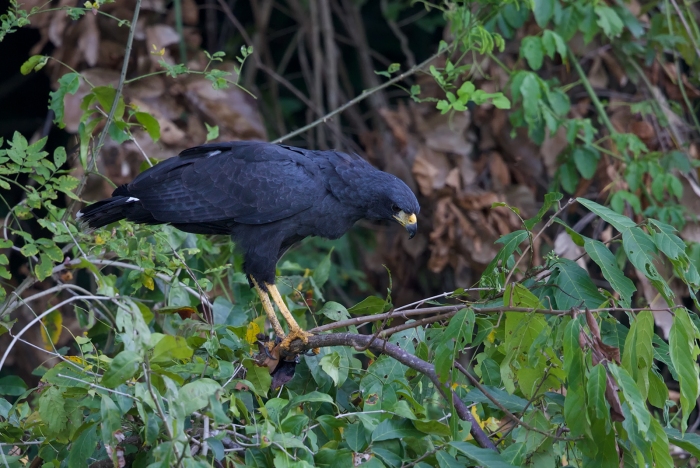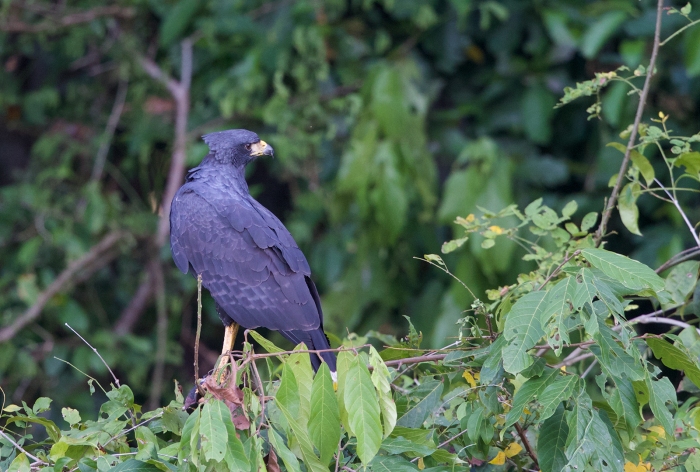Return of Bird of the Week: Great Black Hawk
It’s black. It’s big. It’s a hawk. Therefore, it’s a Great Black Hawk. Another complete failure of imagination by the folks who name birds.

Great Black Hawk, Madre de Dios River, Peru
With a wing span of well over a 3.5 feet and a body length of more than two feet, this is a large raptor. The long, bright yellow legs, white tail band and two-tone bill make the bird unmistakeable in the field.
This species is a generalist, pretty much willing to eat anything it can catch. But it is most commonly found along rivers; in fact, this photo was taken from a dugout, in the upper Amazon Basin in Peru. The species is very widely distributed, ranging from Mexico in the north to Argentina in the south, and along to coast of Central America, the Pacific and the Atlantic.

Great Black Hawk, Rio Napo, Ecuador
While the wide distribution and generalist appetite should mean a good chance for survival, this is a slow-breeding species. Typically, there is a single egg, and fledglings are fed for as long as 10-12 months. Like so many neotropical birds, it is a poorly studied species. Survival rates, territory size, age of sexual maturity and much more are all unknowns.
But it’s a treat to see them in the field.
For more bird photographs, please visit Frozen Feather Images.